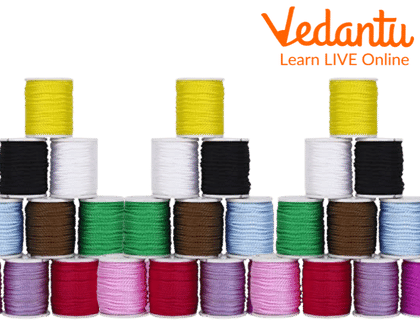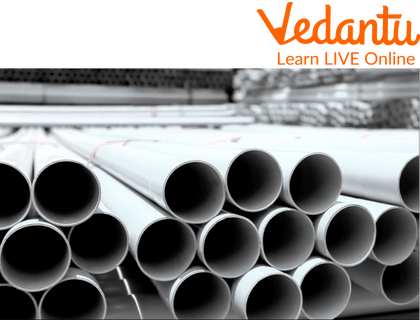




How Thermoplastics Shape Modern Products and Solutions
Thermoplastics are polymers that convert into the liquid state when they are heated and thus can be remoulded at this elevated temperature and they solidify upon cooling. This cycle of heating up and cooling down the plastic can be repeated many times, thus it can be reshaped and remoulded many times very easily. There are a wide variety of thermoplastics and each of them has a variety of applications in different industrial sectors which we will discuss in this article.
Thermoplastics Examples
Some examples of thermoplastic are listed below:
Polythene
Nylon
Teflon
Acrylic
Polystyrene
PVC
Polypropene
Types of Thermoplastics and Their Uses
There are different types of thermoplastic polymers, some of which we will discuss in this section:
Polythene
The word polythene must be very familiar to you and the first thing which comes to mind when we hear the term polythene is the plastic polythenes that we use as carry-bags, but in reality, polythene is a family of several materials. The term Polythene comes from two terms, Poly meaning many and ethene, which simply means many repeating units of ethene. Polythene has several uses, one of the most important ones being plastic bags.
Teflon
The term Teflon actually means Polytetrafluoroethylene. It is a type of fluoropolymer and has various applications, such as making nonstick cookware, it is used as a lubricant in several industrial processes, and being highly non-reactive, it is also used to coat the instruments and lab materials that come in contact with chemicals.
Nylon
Nylon belongs to a subclass of polymers known as polyamides. It is mainly used as a substitute for natural silk and thus is most commonly used in the fabric industry.

Nylon
PVC
PVC is also a term that you may be familiar with, it actually stands for PolyVinylChloride. It is very famous and has a lot of applications because it is a tough yet lightweight material that is used in the manufacture of pipes, drainpipes, gutters, roof sheets, etc.

PVC
Acrylic
The chemical name of Acrylic is Poly methyl methacrylate, and it is a sturdy substitute for glass, thus it is usually used in glass making and other related industries.
Application of Thermoplastic
The uses of Thermoplastic will be discussed in this section:
Thermoplastic material is usually used to make most of the sports equipment.
Most toys are also made up of thermoplastic.
It is also used to make several automobile parts.
Additionally, it is also used to make CDs and DVDs.

CDs and DVDs
Different containers like shampoo bottles, drinking bottles, and food storage containers are all made up of thermoplastic.
Thermoplastic Resin Use
Thermoplastic resins are essential materials that soften on heating and harden on cooling down. Because of this property, they can be moulded into several shapes and structures which makes it applicable to various industries. Let's talk about some of the use of thermoplastic resins:
Some of them are used in the food and drug industries.
They can also be used in the glass making industries, for making window glasses and other types of glasses.
It can also be used in the medical field, as a replacement of defective or non-functional eye lens.
Some are also used in the clothing industry, mainly as a substitute for silk.
Some types are also used in the manufacturing of bulletproof vests and bulletproof glass.
Sample Questions
State whether the statements mentioned below are correctly stated or not.
Thermoplastics are a class of polymers.
Ans: True.
Nylon is a good substitute for natural cotton and thus is used in the clothing industry.
Ans: False, nylon is a substitute for silk and that is why it is used in the clothing industry.
Polythene is the most commonly known thermoplastic polymer.
Ans: True
Learning by Doing
Complete the statements given below by filling in the blanks.
PVC stands for ________.
Ans: PolyVinyl Chloride.
_________ is mainly used to manufacture drain pipes.
Ans: PVC
Thermoplastic ________ can be remoulded again and again.
Ans: resins.
_________ is an example of a fluoropolymer.
Ans: Teflon.
Summary
Thermoplastic is a subclass of polymers and the main quality of thermoplastic is their ability to be remodelled into different shapes and structures due to the effect of heat on them, they become soft on heating and harden back up when cools. There are several different types of thermoplastic polymers like polythene, PVC, nylon, polystyrene, polypropylene, etc. All of these have a variety of applications in a vast variety of industrial fields which we discussed in this article.
FAQs on Uses of Thermoplastic in Everyday Life
1. What exactly makes a plastic a thermoplastic?
A plastic is classified as a thermoplastic because of how it reacts to heat. These materials become soft and mouldable when heated and then solidify upon cooling. This process is reversible, meaning you can heat and reshape them multiple times without significantly changing their chemical properties. This is different from thermosetting plastics, which set permanently after being heated once.
2. What are some common examples of thermoplastics we see in everyday life?
You likely use thermoplastics every day without realising it. Common examples include:
- Polyethylene Terephthalate (PET): Used for water and soda bottles.
- Polyvinyl Chloride (PVC): Used for pipes, window frames, and flooring.
- Polypropylene (PP): Found in food containers, car parts like bumpers, and furniture.
- Polystyrene (PS): Used for disposable cups, foam packaging, and insulation.
3. What is the main difference between a thermoplastic and a thermosetting plastic?
The key difference lies in their response to heat. A thermoplastic can be repeatedly melted and reshaped, making it highly recyclable. A thermosetting plastic, once heated and moulded, undergoes an irreversible chemical change and becomes permanently hard. It cannot be remelted or reshaped.
4. Why are thermoplastics so widely used in industries like packaging and automotive?
Thermoplastics are popular in these industries for several key reasons. They are lightweight, which helps in fuel efficiency for cars. They are also durable and resistant to chemicals and impact. Most importantly, they are easy to mould into complex shapes using processes like injection moulding, which makes manufacturing fast and cost-effective for items like bottles, containers, and car dashboards.
5. How does the molecular structure of thermoplastics allow them to be remoulded?
The magic is in their structure. Thermoplastics consist of long polymer chains that are held together by weak intermolecular forces. When heated, these forces weaken, allowing the chains to slide past each other and making the material flow like a thick liquid. When it cools, the forces re-establish, and the material becomes solid in its new shape.
6. Since thermoplastics are recyclable, does that mean they are completely environmentally friendly?
Not necessarily. While recyclability is a major advantage, there are still environmental concerns. The production of most thermoplastics relies on fossil fuels. Furthermore, the recycling process itself requires energy, and not all thermoplastic products are collected or recycled effectively, often ending up in landfills or as plastic pollution. The quality can also degrade after multiple recycling cycles.
7. What happens to the properties of a thermoplastic if it is heated and cooled too many times?
Although thermoplastics can be recycled, repeated heating and cooling can cause thermal degradation. The long polymer chains can start to break down, which may slightly reduce the material's strength, flexibility, and overall quality. This is why recycled plastics are often mixed with new (virgin) plastic to maintain the desired properties for new products.





















